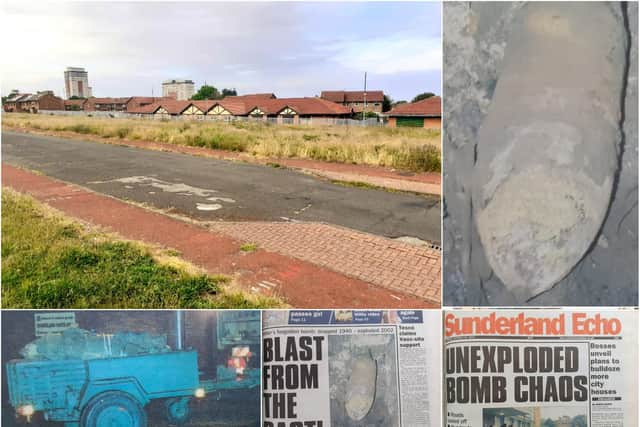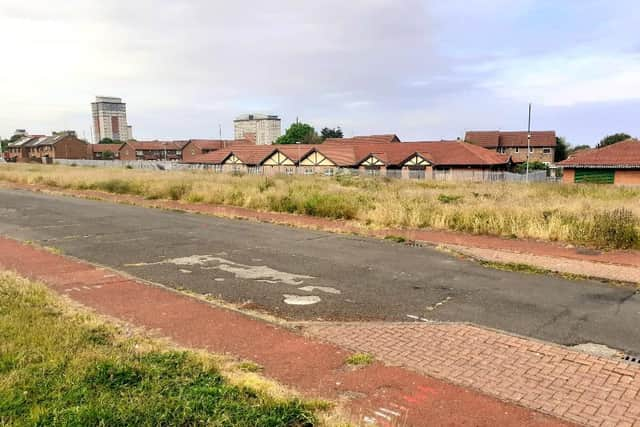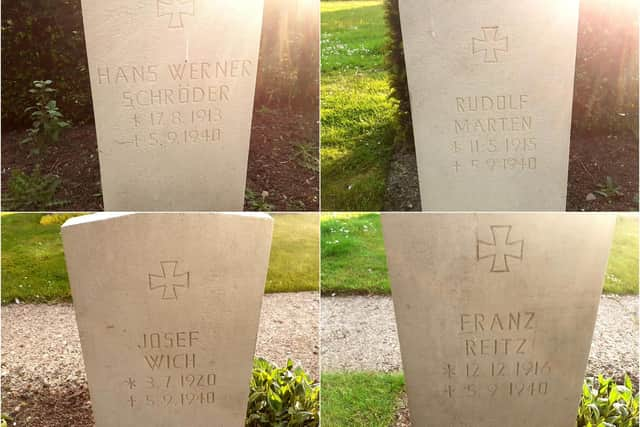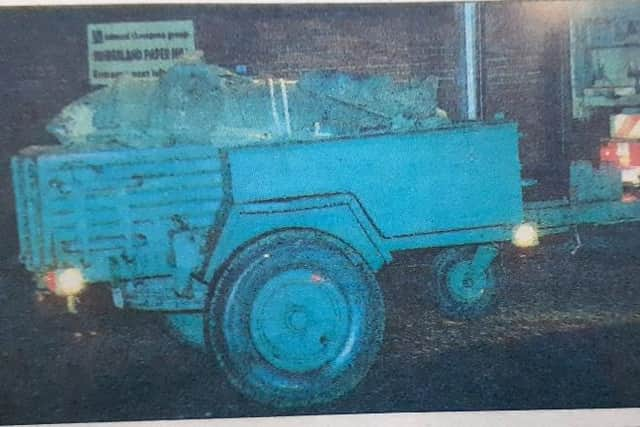The Second World War bomb that caused chaos in Sunderland – 62 years later
and live on Freeview channel 276
On 4.40pm on Monday, October 14, 2002 a 1,000-pound bomb (about the weight of five average sized men) was discovered during excavation work behind Deerness Park Medical Centre on Suffolk Street in Hendon. The bomb squad was called.
There would be three days of chaos before the drama would end.
The background


Advertisement
Hide AdAdvertisement
Hide AdThe bomb was never dropped from a plane. It was shed in a crash landing, then lay undetected.
World War Two was in full, horrific swing on the night of September 5, 1940 when the German Heinkel He 111P bomber was shot down, crashing in Suffolk Street at 11.18pm.
Rachel Stormont, 41, was killed. Her husband John was seriously injured. Their daughter Jean Stormont, 15, lost both hands, although this would not stop stop her from becoming a telephone operator.
Four German servicemen, all of the plane’s crew, were killed including Hans Schröder, 27, who was found dead in a nearby garden with his unopened parachute.


Advertisement
Hide AdAdvertisement
Hide AdRudolf Marten, 25 and Josef Wich, 20 were still in the bomber’s wreckage. The parachute of Franz Reitz, 23, opened, but his horrifically injured body landed on the roof of an air raid shelter at Bede Towers on Ryhope Road where he was found dead.
All four were respectfully buried in Castletown Cemetery where their graves are still beautifully tended. Human beings first, enemies second. They were ordinary young men.
There the incident ended. At least that’s what was presumed for the next 62 years.
Discovery


No one knew that the plane had accidentally discarded one particular bomb. It was packed high with explosives and would most probably have killed someone on that fateful afternoon in 2002, had workers not realised what they had unearthed. It was also close to a gas main.
Advertisement
Hide AdAdvertisement
Hide AdWe can only imagine the fright they received, particularly the operator of the digger. On a hitherto ordinary working day, they were dealing with something extraordinary.
Police immediately closed off Suffolk Street and surrounding areas. Hundreds of residents were evacuated and Army bomb disposal experts were called in.
Those brought up on films and the television series Danger UXB, might have expected some highly qualified military boffin to attend to the matter with snippers, pliers and a keen eye; defusing the bomb within a couple of hours.


Action is taken
It would not be so easy and it took a while to conclude that detonation was the only solution.
Advertisement
Hide AdAdvertisement
Hide AdBefore that trees and fencing were removed, while metal skips were filled with sand and water to lower any impact should the bomb go off.
The October 16 Echo reported: “Army chiefs revealed that an attempt to disarm the bomb, last night, had failed. The disposal team is now in discussions with experts and examining the options that could be used to end the situation.
“Police chiefs have urged people to leave the area around Suffolk Street, following fears that if the bomb exploded it would create a 25ft wide crater, damaging buildings up to 650ft away.”
Quite why anyone would need to be urged to avoid a 1,000-pound bomb that could create a 25ft wide crater, damaging buildings up to 650ft away, remains a matter of some conjecture in Hendon.


Advertisement
Hide AdAdvertisement
Hide AdUp to 2,000 residents abandoned their homes during the crisis. Many slept at Southmoor School, others with relatives. Nineteen elderly people were moved to suitable accommodation in Jarrow and South Shields.
Southmoor and Thornhill School were closed, as were primaries Valley Road and Hudson Road. Also closed were the Raich Carter Centre, Winter Gardens, Silksworth Tennis Centre, Hendon Library and Nookside Day Centre; either for safety reasons or because they provided temporary accommodation.
The public’s response
At first entirely false rumours circulated about terrorism. The World Trade Centre had been attacked a year earlier and people were still very wary. Otherwise there was something decidedly British about the reaction of people living close to the enormous, unexploded bomb.
The police never said they were at their wits’ end, but they coped with the situation, including considerable public intransigence, extremely well. You can lead a horse to water...
Advertisement
Hide AdAdvertisement
Hide AdSuperintendent Paul Weir said: “If they refuse to do so (evacuate) and stay at home, they should stay away from their windows facing Suffolk Street.”
While 2,000 or so people had left their homes, an estimated 1,000 others largely ignored the possibility of being blown to smithereens.
Winnie Davies OBE, 75, remembered when the plane crashed in 1940 and seemed unruffled, claiming: “I have been calculating the risk and I decided to stay here because it’s too cold outside.” Well it was October.
Another resident, perhaps missing the point somewhat, said: “It’s been there for 60 years, so we didn’t think one more night would make any real difference.”
Advertisement
Hide AdAdvertisement
Hide AdTrevor Foulds, barman at the nearby Ivy Leaf Club, said: “It doesn’t seem to have affected business.”
Detonation
When it was realised that the bomb would have to be blown up, it was removed from behind Deerness Park Health Centre in a very delicate rope and pulley operation.
It was placed on a trailer pulled by an Army truck, flanked by five police cars, two coastguard vehicles and a military jeep; then “moved at a snail’s pace” towards Hendon Beach.
It was placed in a hole dug by soldiers at the bottom of the cliffs at Salterfen Rocks at 1.25am on Thursday, October 17. BOOM! It was detonated by remote control.
Advertisement
Hide AdAdvertisement
Hide AdThen it was all over bar the insurance claims. Three original stained glass windows in the Hendon Grange pub were smashed; the last victims of an ill-fated bombing raid 62 years earlier.
